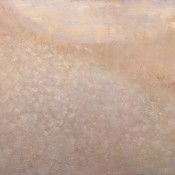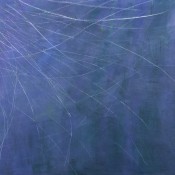HISAKO KOBAYASHI
Hisako Kobayashi's all-over paintings evoke universal emotions through abstract means. Vast fields of colors built up in layers appear to float over the canvas, creating atmospheric associations, while the subtle vibrations of each composition allude to the energy and sound of the natural world. Kobayashi's work reflects both her Japanese heritage and her American home, recalling the Abstract Expressionists and their fascination with the sublime.
-
Shangri La
 add to drawer
add to drawer
-
At The Heart Of Things
 add to drawer
add to drawer
-
Say In Silence
 add to drawer
add to drawer
-
Beauty is Truth, ...
 add to drawer
add to drawer
-
I've Become A Pilgrim To ...
 add to drawer
add to drawer
-
As The One And Only Force
 add to drawer
add to drawer
-
As The River Runs To The Sea
 add to drawer
add to drawer
-
Try Again
 add to drawer
add to drawer
-
Last Thing Said
 add to drawer
add to drawer
The birth of Abstract Art about a hundred years ago was inextricably linked with spiritual and metaphysical ideas that could not be expressed with traditional pictorial means. To convey such notions in painting has been and still is the concern of the majority of abstract artists.
This is certainly true for Hisako Kobayashi, who started out with the idea of painting sound and expressing feelings equivalent to those expressed by music, aspiring to pure painting made up of lines and shapes. Just as music can give pleasure and comfort to its listeners, painting, too, can evoke universal emotions and establish connections between human beings without the need for words. Kobayashi’s goal is to transform human suffering into quiet works which can give solace and create hope, conveying a positive outlook on life.
Powerful yet delicate, Kobayashi’s paintings reflect both her Japanese roots and her American home of choice. They are all-over canvases aiming to evoke the sublime, thus recalling American Abstract Expressionism and the work of associated artists such as Mark Tobey. The vast fields of muted color create an atmospheric space: in fact, they seem to actually depict the air filled with energy and sound, visually expressing the invisible. Depth is achieved by layering: Kobayashi’s paintings consist of many layers of paint (sometimes even one canvas placed on top of another one), alluding to layers of coexisting feelings. Subtle and dynamic lines mark the space and suggest vibrations, recalling Japanese calligraphy. They trace movements and bring to mind natural sounds, like the steady beating of the waves, the whisper of the wind or the murmurs of a stream. Paintings such as Synoptic Knobs, 1998, even though abstract, often evoke the elements water and air.
Kobayashi’s works succeed in drawing the viewer in: by alluding to the invisible world around us they inspire contemplation and meditation. Her titles refer to places and spaces the paintings recall and are given to the works after completion, like an afterthought.
The paintings’ great dynamic energy, created by a tension of binary opposites, is ultimately resolved into a harmonic balance. This creation and reconciliation of opposites holds our attention as it reminds the viewers of their own struggle.
Like an antenna or medium, Kobayashi picks up vibes, tensions and emotions from her surroundings, transforming or “abstracting” them into positive and meaningful creations. Her paintings emanate a deep positive serenity and an enlightened spirit while still recalling the difficult journey it takes to achieve this state of mind.
Joseph Campbell once remarked that the artist’s role today is what was formerly the role of the shaman: to explain the divinity inherent in nature and to explain unseen things. Kobayashi has clearly taken on this task, giving a voice to the voiceless, representing messages she “receives from this amazing cosmos.”
by Ursula Hawlitschka, Ph.D
